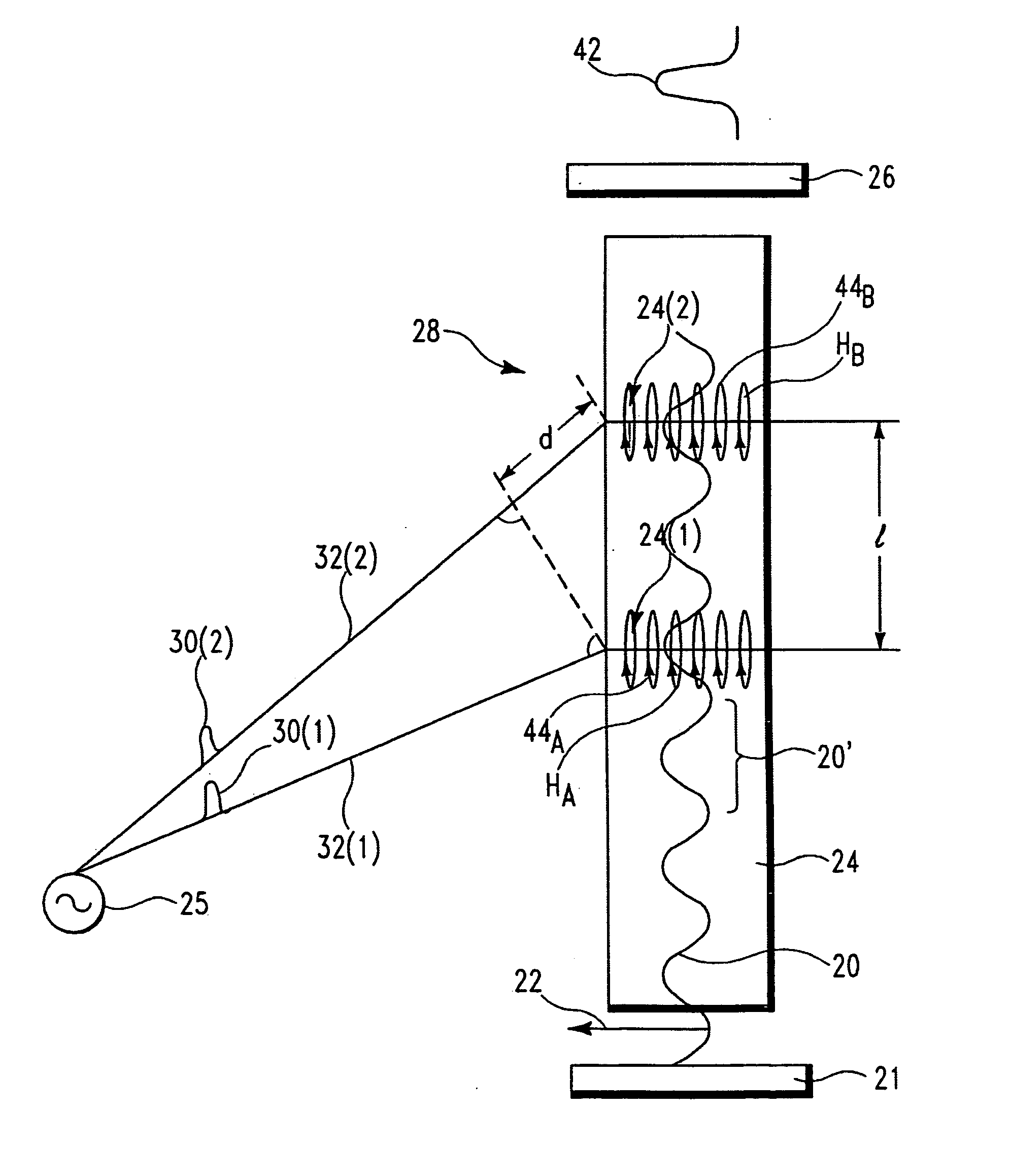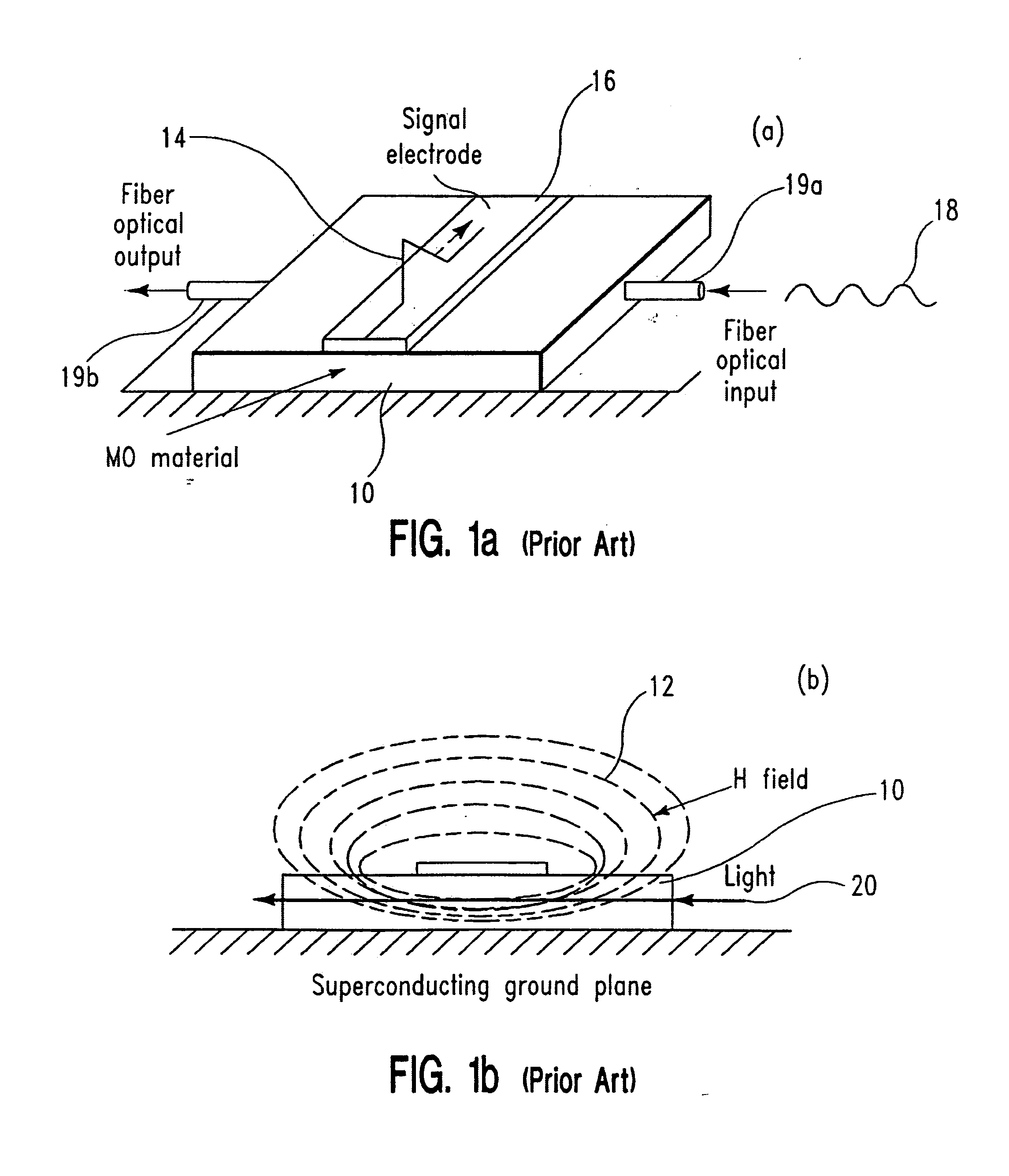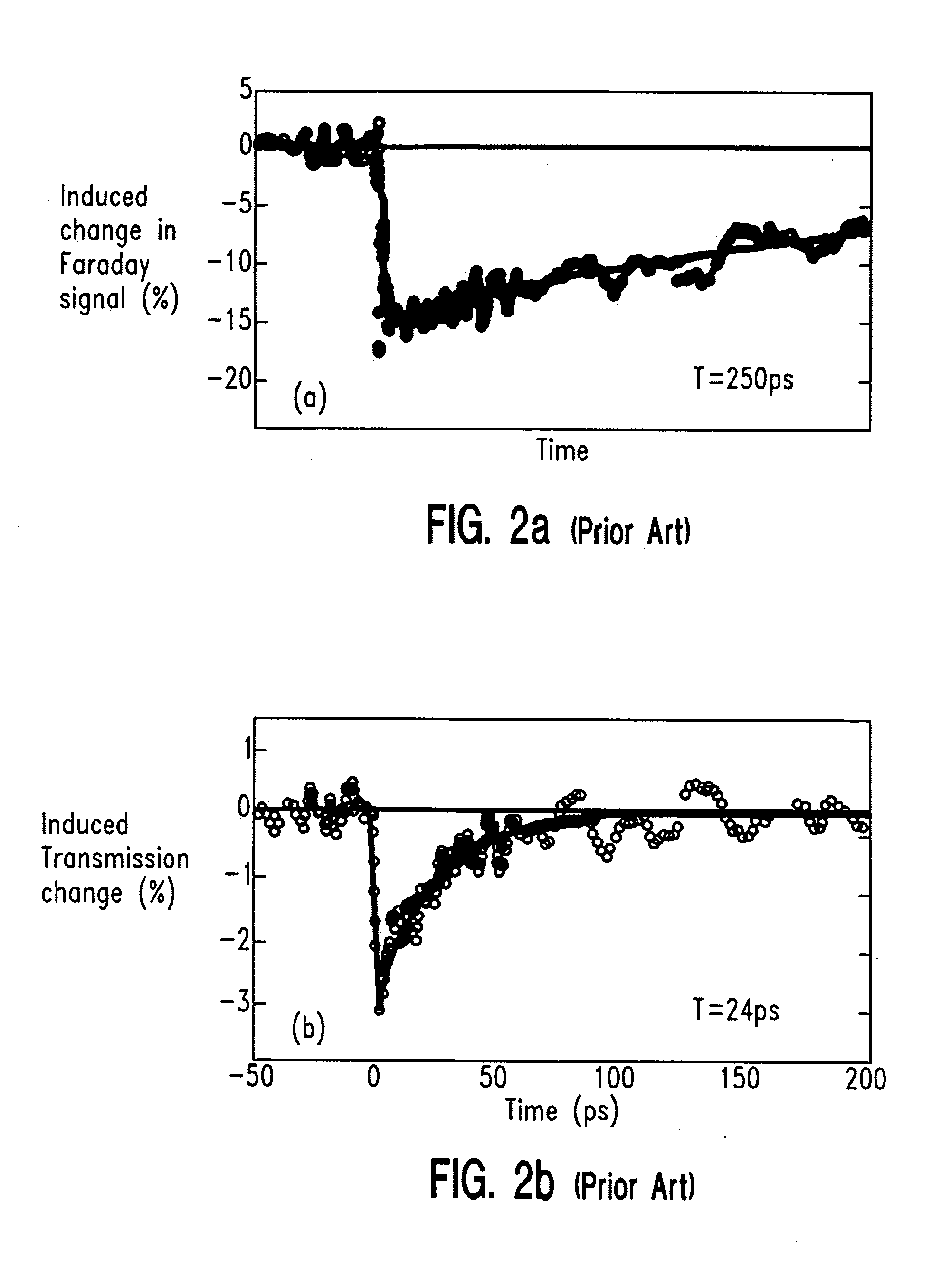Method for high amplitude fast optical modulation
a high data rate, optical modulation technology, applied in optics, instruments, electrical apparatuses, etc., can solve the problems of slow conversion from electrical to optical, difficult to make the transition quickly, and the speed at which light can be electrically switched or modulated, etc., to achieve a higher data rate, shorter time, and higher amplitude
- Summary
- Abstract
- Description
- Claims
- Application Information
AI Technical Summary
Benefits of technology
Problems solved by technology
Method used
Image
Examples
Embodiment Construction
[0060] The 4.52° rotation of the polarization of light described in the Sobolewski paper for a EuSe magneto-optical waveguide was produced by a 2.51 Oe magnetic field provided by a current pulse of 1 mA flowing in a superconducting Nb-trilayer from a 10 um2 Josephson junction pulse generator. The present invention provides schemes to boost that rotation angle while increasing current pulse speed, signal amplitude, extinction coefficient, and data rate.
[0061] A review paper, “RSFQ Logic / Memory Family: A New Josephson-Junction Technology for Sub-Terahertz-Clock-Frequency Digital Systems,” by K. K. Likharev and V. K. Semenov, IEEE Transactions on Applied Superconductivity, vol. 1, No. 1, March 1991, (“the Likharev paper”), shows that the speed-performance of a Josephson junction varies inversely with the size of the junction. Extrapolating from Table 1 in the Likharev paper, the 10 um2 junction of Sobolewski would provide a switching time of 8 ps which would corresponds to a 125 GHz s...
PUM
 Login to View More
Login to View More Abstract
Description
Claims
Application Information
 Login to View More
Login to View More - R&D
- Intellectual Property
- Life Sciences
- Materials
- Tech Scout
- Unparalleled Data Quality
- Higher Quality Content
- 60% Fewer Hallucinations
Browse by: Latest US Patents, China's latest patents, Technical Efficacy Thesaurus, Application Domain, Technology Topic, Popular Technical Reports.
© 2025 PatSnap. All rights reserved.Legal|Privacy policy|Modern Slavery Act Transparency Statement|Sitemap|About US| Contact US: help@patsnap.com



